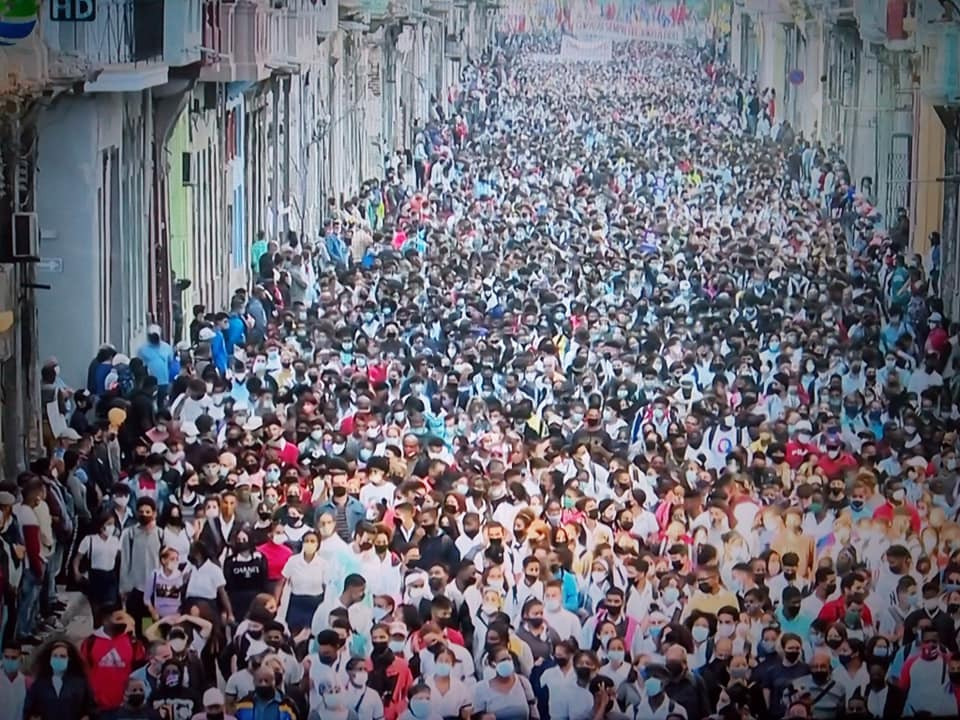
March proceeds down San Lazaro from the University of Havana
Havana, November 27 (RHC)-- Cuban President Miguel Díaz-Canel marched today with thousands of students to commemorate the 150th anniversary of the shooting of eight students of medicine, one of the worst crimes in national history.
After a brief act of remembrance, the participants made a pilgrimage from the steps of the University of Havana to the monument that commemorates the students’ unjust execution in 1871.
Members of the top leadership of the Government, the Communist Party, the Union of Young Communists of Cuba, the Federation of University Students, representatives of mass organizations and civil society also paid tribute.
In statements to Prensa Latina, Aylin Alvarez, First Secretary of the Union of Young Communists of Cuba stressed that this event marks the Cuban and university youth.
In the leader's opinion, the youth is a main protagonist in different scenarios, not only in production, in economic fields but also in all that is related to events like this.
"We are committed to the Revolution and we have been able to see examples of that commitment in the streets during the confrontation to COVID-19", she added.
Daniel Madina Fernández, the National Vice-president of the Federation of University Students, also said to Prensa Latina that young people are constantly trying to defend our history.
"After such a long time without being able to congregate like this due to the Covid-19, it is very significant to make this tribute and also defend the great work of the Revolution," he said.
On November 23, 1871, a group of first-year students of medicine were waiting for their professor in the anatomical amphitheater next to the Espada Cemetery in Havana.
According to historical investigations, the group dispersed around the cemetery, some of them rode around in the local wheelbarrow, another one plucked a flower and the rest were pretending to be fancing. Subsequently, the Spanish authorities accused them, without proof, of desecrating the tomb of the Spanish journalist Gonzalo Castañón.
This took place in the middle of a tense historical context due to the increasing defeats of the Iberian army at the hands of the leaders of the cuban war for independence that started in 1868 in the eastern part of the country.
In the first War Council the innocence of the young men was demonstrated, however, due to the pressure of the Spanish Volunteer Corps of Havana, a second trial decided to sentence the young men to set an example.
To complete the number of eight that will be executed, three of the students were chosen at random including a 17-year-old student from the city of Matanzas, who was not even in Havana during the day of the alleged desecration.
On November 27 those students were shot, another group was sentenced to prison and then exiled.

